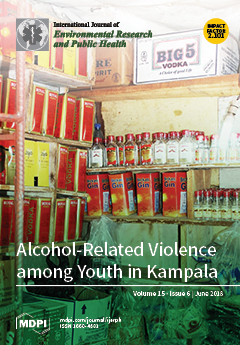1
International Gaming Research Unit, Psychology Department, Nottingham Trent University, Nottingham NG1 4FQ, UK
2
Laboratory for Experimental Psychopathology, Psychological Sciences Research Institute, Université Catholique de Louvain, 1348 Louvain-la-Neuve, Belgium
3
Department of Social Services and Rehabilitation, Oulu University of Applied Sciences, 90220 Oulu, Finland
4
Research Unit of Nursing Science and Health Management, University of Oulu and Oulu University Hospital, 90014 Oulu, Finland
5
Department for Psychiatry and Psychotherapy, University of Lübeck, 23538 Lübeck, Germany
6
EA 4430 Clinique Psychanalyse Développement (CLIPSYD), Université Paris Nanterre, France; U894 Centre de Psychiatrie et Neurosciences, (CPN), Inserm, 92000 Paris, France
7
EA 2931, Centre de Recherches sur le Sport et le Mouvement (CESRM), Université Paris Nanterre, 92000 Nanterre, France
8
Psychology Department, PSITEC EA 4074, Université Lille Nord de France, 59650 Villeneuve d’Ascq, France
9
LPS EA 849, Aix-Marseille University, 13007 Marseille, France
10
Psychologie, Langues, Lettres et Histoire Département, University of Nîmes, 30000 Nîmes, France
11
Institute of Psychology, ELTE Eötvös Loránd University, 1064 Budapest, Hungary
12
Faculty of Human and Social Sciences, UKE—Kore University of Enna, Cittadella Universitaria, 94100 Enna, Italy
13
Department of Family Science and Social Work, Katolicki Uniwersytet Lubelski Jana Pawła II, 20-950 Lublin, Poland
14
Department of Psychology, Katolicki Uniwersytet Lubelski Jana Pawła II, 20-950 Lublin, Poland
15
Department of Basic Psychology, University of Valencia, 46010 Valencia, Spain
16
Department of Developmental and Educational Psychology, University of Valencia, 46010 Valencia, Spain
17
Service de Toxicomanie, Faculte de medicine Université de Sherbrooke, Longueuil, Qc, J4K 0A8, Canada
18
Department of Psychology and Educational Sciences, University of Geneva, 1205 Geneva, Switzerland
19
Department of Psychiatry—Research Unit Addictive Disorders, University of Geneva, 1205 Geneva, Switzerland
20
Department of Mental Health and Psychiatry—Addiction Division, University Hospitals of Geneva, 1205 Geneva, Switzerland
21
Clinical Neuroscience Research Group, Department of Psychology, University of Oslo, 0317 Oslo, Norway
22
Department Psychiatry and Behavior, School of Medicine and Health Science, Atma Jaya Catholic University of Indonesia, Jakarta 14440, Indonesia
23
Department of Psychology, University at Albany State University of New York, Albany, NY, USA
24
University Hospitals Cleveland Medical Center/Case Western Reserve University, Cleveland, OH 44106, USA
25
Addictive and Compulsive Behaviours Lab (ACB-lab), Institute for Health and Behaviour, University of Luxembourg, 4366 Esch-sur-Alzette, Luxembourg
add
Show full affiliation list
remove
Hide full affiliation list





